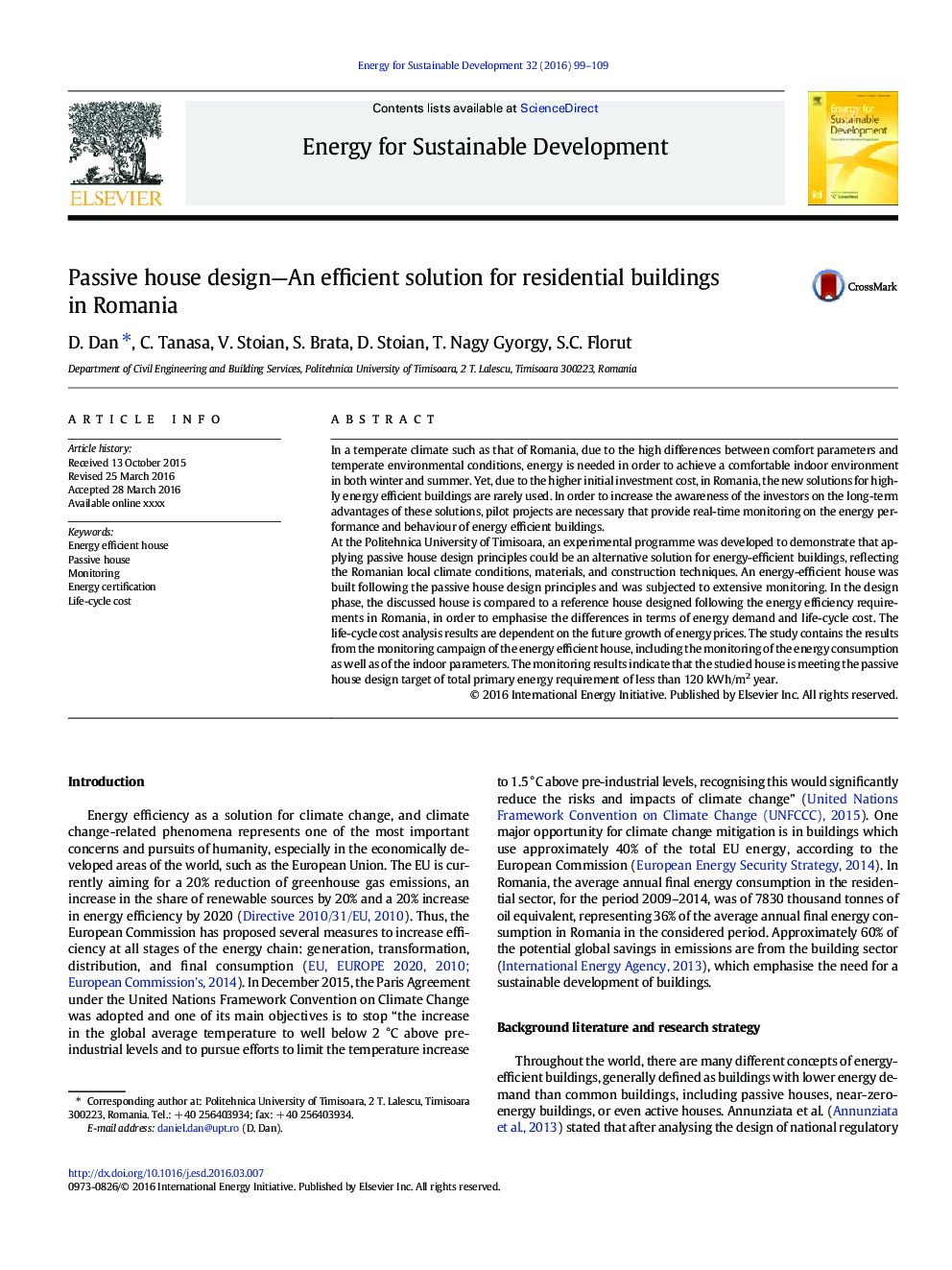| Article ID | Journal | Published Year | Pages | File Type |
|---|---|---|---|---|
| 7453840 | Energy for Sustainable Development | 2016 | 11 Pages |
Abstract
At the Politehnica University of Timisoara, an experimental programme was developed to demonstrate that applying passive house design principles could be an alternative solution for energy-efficient buildings, reflecting the Romanian local climate conditions, materials, and construction techniques. An energy-efficient house was built following the passive house design principles and was subjected to extensive monitoring. In the design phase, the discussed house is compared to a reference house designed following the energy efficiency requirements in Romania, in order to emphasise the differences in terms of energy demand and life-cycle cost. The life-cycle cost analysis results are dependent on the future growth of energy prices. The study contains the results from the monitoring campaign of the energy efficient house, including the monitoring of the energy consumption as well as of the indoor parameters. The monitoring results indicate that the studied house is meeting the passive house design target of total primary energy requirement of less than 120Â kWh/m2 year.
Related Topics
Physical Sciences and Engineering
Energy
Energy (General)
Authors
D. Dan, C. Tanasa, V. Stoian, S. Brata, D. Stoian, T. Nagy Gyorgy, S.C. Florut,
